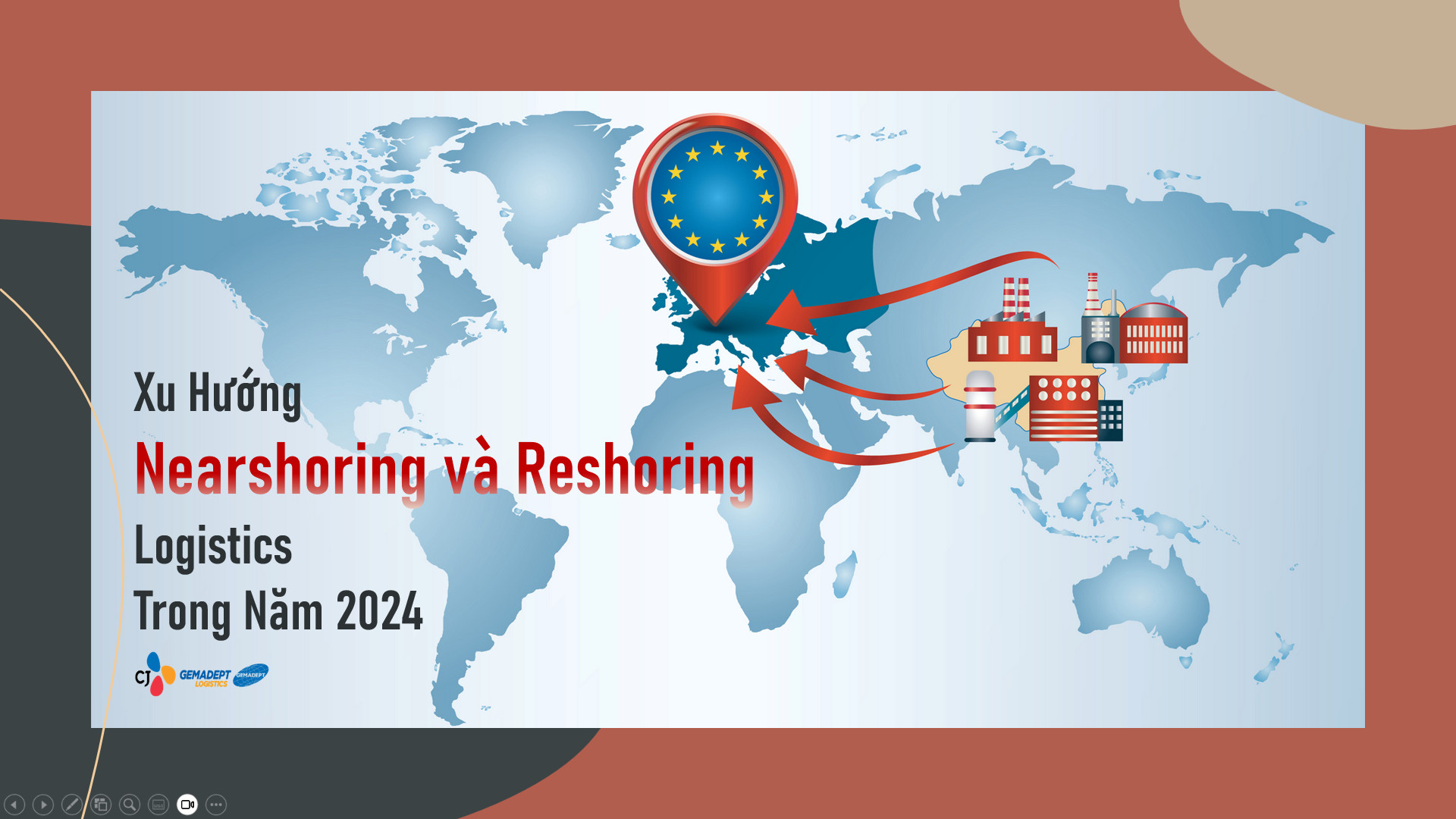In the aftermath of the challenges posed by COVID-19, global industries are facing a new wave of disruptions, particularly in shipping routes affected by geopolitical conflicts. Executives must confront new challenges as deliberate attempts to block the flow of goods unfold. Large-scale shipping redirections are impacting dozens of countries in Europe, North America, and Asia. In this rapidly changing landscape, supply chain leaders must explore innovative pathways to avoid unnecessary delays and drive the supply chain forward. To mitigate the chaos in international shipping, businesses can strategically rely on Nearshoring and Reshoring, a trend that has been gaining momentum since the pandemic. In 2024, a further surge is anticipated in companies sourcing materials and goods closer to home markets to mitigate risks associated with international shipping.

Definitions of Nearshoring and Reshoring
- Nearshoring: This strategy involves relocating production and services closer to the main consumer markets. Instead of manufacturing in distant countries, businesses choose neighboring countries to reduce transportation distance, risks, and costs.
- Reshoring: This process involves bringing production activities back to the country of origin or closer after having been moved overseas for a long period. The primary goal is to enhance control, reduce transportation costs, and address risks associated with global supply chains.
Key Drivers of Nearshoring and Reshoring
1. Global Supply Chain Risks:
- Pandemic Disruptions: COVID-19 exposed numerous weaknesses in global supply chains, from transportation disruptions to material shortages. Nearshoring and Reshoring help mitigate these risks by shortening transportation distances and optimizing supply chain flexibility.
- Geopolitical Conflicts: Trade policy fluctuations between nations, especially trade tensions among major economies, have prompted many businesses to reconsider their supply strategies and prioritize closer regions.
2. Transportation Costs:
- The global shipping costs have significantly increased due to rising oil prices and other related expenses. Bringing production activities closer to consumer markets helps minimize these costs.
3. High Customization Demand:
- Consumers increasingly demand customization and shorter delivery times. Nearshoring and Reshoring allow businesses to quickly respond to these requirements and maintain market competitiveness.
Benefits of Nearshoring and Reshoring
1. Reduced Delivery Times: Manufacturing closer to consumer markets significantly shortens delivery times, improving customer experience and increasing competitiveness.
2. Increased Flexibility: Nearshoring and Reshoring enable businesses to easily adjust production according to market demand, optimizing operations and minimizing waste.
3. Improved Quality Control: Closer production facilitates easier quality control and swift issue resolution.
4. Enhanced Sustainability: Reducing transportation distances not only saves costs but also lowers CO2 emissions, contributing to environmental protection.
Challenges of Nearshoring and Reshoring
1. Higher Labor Costs: Some countries near main consumer markets have higher labor costs compared to traditional manufacturing countries like China and India, potentially increasing overall production costs.
2. Resource Scarcity: Areas closer to consumer markets may lack the necessary resources and infrastructure to meet large-scale production demands, causing productivity and quality issues.
3. Policies and Regulations: Businesses must adapt to comply with the policies and regulations of the countries where they implement Nearshoring and Reshoring, which can be complex and costly.
Nearshoring and Reshoring Trends in Vietnam
Vietnam is emerging as an attractive destination for Nearshoring and Reshoring activities due to its favorable geographical location, competitive labor costs, and supportive foreign investment policies. Many major companies have shifted a portion of their production from China to Vietnam to capitalize on these advantages. Geographically, Vietnam is close to large consumer markets like China, Japan, Korea, and Southeast Asia, reducing transportation time and costs compared to more distant regions. Additionally, labor wages in Vietnam are lower than in many other countries in the region, including China, reducing production costs and enhancing competitiveness. The Vietnamese government has also introduced numerous policies to support foreign investment, including tax exemptions, land lease incentives, and infrastructure development support, creating favorable conditions for international businesses to invest and establish production facilities in Vietnam.

Real-world examples illustrating this trend include Samsung, the South Korean tech giant, which has invested billions of dollars in Vietnam to build factories for producing mobile phones and other electronic products. Nike and Adidas, two major footwear brands, have also moved a significant portion of their production from China to Vietnam, leveraging the low labor costs and political stability. Intel, the American tech company, has invested in an assembly and test chip plant in Ho Chi Minh City, showing that Vietnam attracts not only light industries but also high-tech industries. Vietnam is emerging as a new manufacturing hub, attracting international businesses with its geographical, cost, and policy advantages. This not only enhances Vietnam's position in the global supply chain but also boosts the country's economic development.
Nearshoring and Reshoring logistics are not merely temporary trends but also long-term strategies that help businesses enhance competitiveness and mitigate risks from global supply chains. In 2024, Nearshoring and Reshoring are expected to continue growing strongly, particularly in regions with geographical and policy advantages such as Southeast Asia and Latin America. Businesses need to embrace this trend to optimize operations and ensure sustainable development in the future.
Source: TEBS Department - CJ Gemadept Logistics